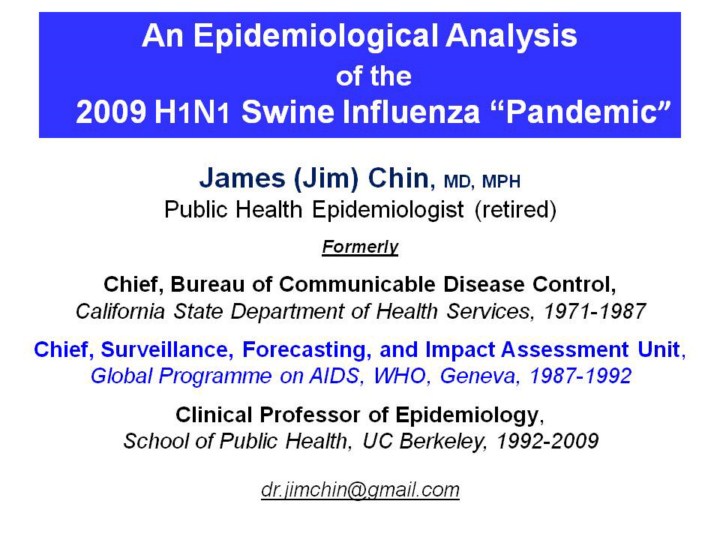| front |1 |2 |3 |4 |5 |6 |7
|8 |9 |10 |11 |12 |13 |14 |15 |16 |17 |18 |19 |20 |21 |22 |23 |24 |25 |26 |review |

More Supercourse lectures on Influenza Influenza A(H1N1) (Swine Flu): Pandemic Part II in Russian in Spanish Part II in Farsi in Arabic in Vietnamese in Malay in French in Macedonian in Chinese in Hebrew in Bosnian in JapaneseInfluenza: An Impending Pandemic Part I (in Macedonian) (in Spanish) (in Russian) (in Chinese) (in Persian) Part II (in Spanish) (in Macedonian) (in Chinese) (in Russian) AVIAN INFLUENZA: Zoonosis (In Spanish) 1976 Swine Flu Vaccine Debacle and U.S. Vaccine Strategy for Avian Flu: History Repeating Itself? AVIAN INFLUENZA IN VIETNAM ‘Cum ga” (in Spanish) Biodefense and Pandemic Influenza: The Research and Public Health Interface How to Improve your Immune System. Part I. Bird Flu Part II Herd Protection against Influenza Challenges of Influenza Control in Spanish Incidence of Influenza in Ontario Following the Universal Influenza Immunization Campaign Current Status of the H1N1 Flu Avian Influenza: Agricultural Perspectives & Interventions
|
An Epidemiological Analysis of the 2009 H1N1 Swine Influenza “Pandemic”
lecture by James Chin Uploading
date: June
16, 2012
Influenza, commonly called the “flu”, is the name of an infection caused by influenza viruses. Pandemic is an epidemic of infectious disease spread over wide regions of the world. Influenza is just one of over 200 infectious disease agents, such as the common cold viruses, etc., that can cause - ‘Influenza-like illness’ (ILI). Overall, the vast majority (80%) of ILI are not due to influenza viruses – except during the influenza season or an influenza pandemic. To most people, an influenza-pandemic causes enormous numbers of death and disease and that is the meaning used by WHO, up till early May 2009. WHO suddenly changed the definition of an influenza pandemic AFTER the emergence of the H1N1 influenza virus in the USA and Mexico in April 2009. This presentation: (1) reviews past influenza pandemics and specific epidemiological findings for the 2009 H1N1 influenza virus; and (2) evaluates WHO’s recommendations for, and management of, the 2009 H1N1 swine influenza “pandemic.”
|
Search for more Supercourse Lectures